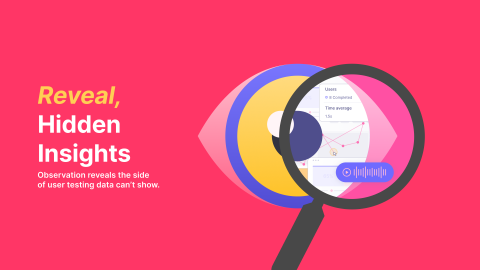We love bringing UX experts from around the globe to our community!
Layshi Curbelo, a seasoned UX designer from Puerto Rico and our podcast host of “If U Seek“, has transformed her passion for creative problem-solving into a successful career focused on accessibility, diversity, and inclusion. From starting in advertising to becoming an international speaker and podcast producer, Layshi emphasizes the importance of communication and empathy in UX design.
Let’s uncover her story!
Design Journey: From Art and Communication to UX
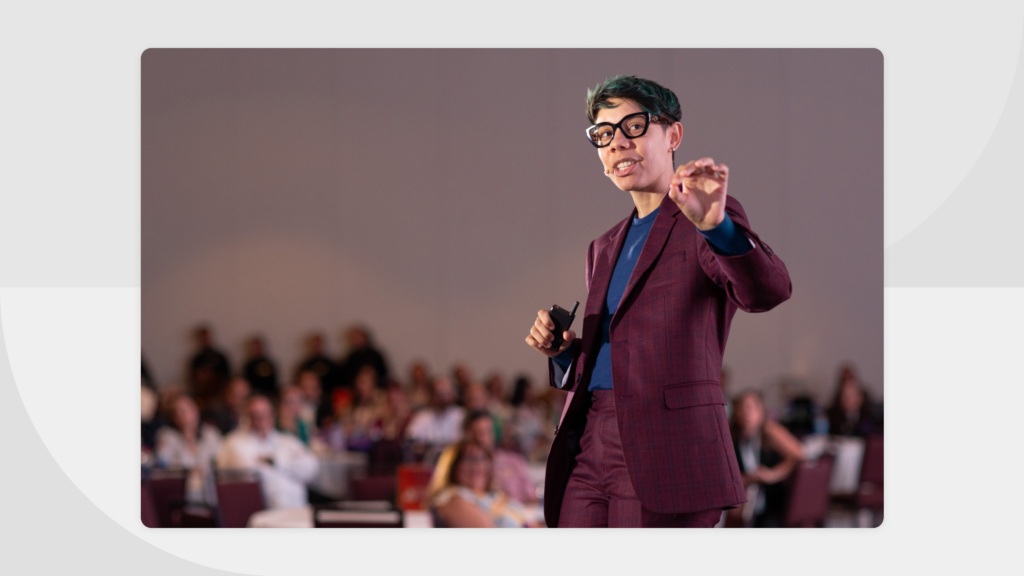
Can you tell us about your initial experiences in the design industry and what motivated you to pursue a career in UX design?
I started with a passion for art. When I graduated from high school, I was fully convinced that I wanted something related to arts, but I also recognized at a young age that I didn’t have the skills. Yep, it sounds awful, but I was aware of my strengths and weaknesses. That being said, I remember saying to myself, “Well, where can you apply arts but add something logical, structured, or even guided?” I decided to go into advertising but more into the creative field. Over the years, I noticed that it was never the advertising itself; it was the creative problem-solving process that I loved, with a little hint of aesthetics. My true love was design.
How has your background in communications influenced your approach to UX design?
I never really thought of communications as being so important in my career until less than five years ago when I started working as a podcast producer and international speaker on topics of user experience, accessibility, and inclusion. I believe it has been the most powerful tool, one I greatly underestimated, which has opened doors to incredible projects where I can educate and learn from great colleagues. So I will say that communication has been the door for my career path definitely. I realized over time that many designers don’t know how to articulate their processes, and it is essential not only to communicate through visuals but also through words, where you can convey your intention, strategy, and approach to making your work visible. An interesting fact is that among the podcasts I produce, I could say I’ve conducted more than 250 interviews. It’s incredible to think about the number of designers I’ve spoken to and what it has meant for me to learn from each and every one of them on very different topics, although all of them touch on design from some point of view.
Expert Advice: Solving Problems with Creativity
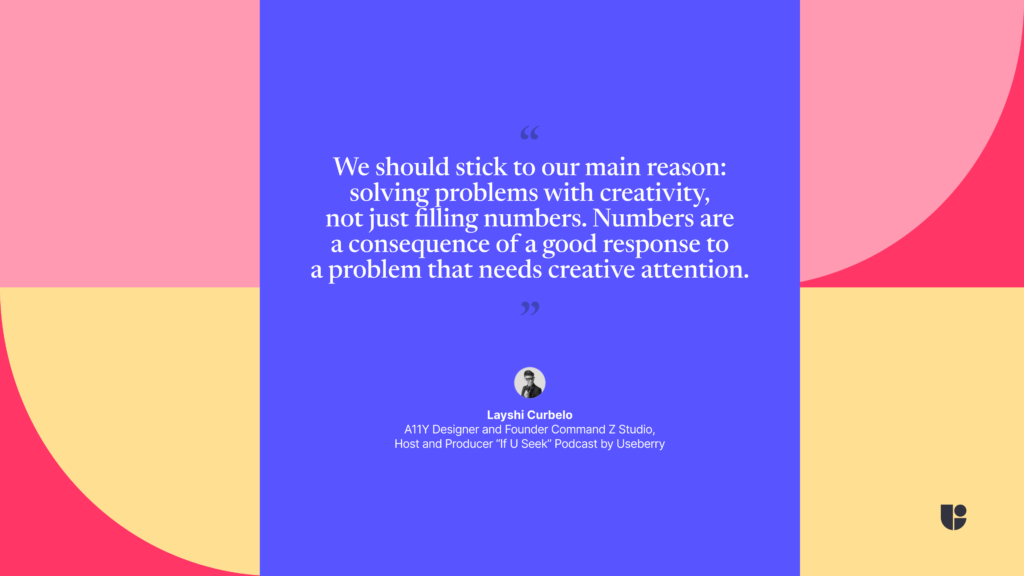
What are the most important lessons you’ve learned from your experiences in design?
A mistake is never a mistake; it’s a learning moment that hurts. You have two options: learn on the happy path of reading and self-educating, or learn by making mistakes that sometimes hurt. I’ve been through some horror stories that taught me not to repeat them and helped me create a huge list of how the design business moves and plays. For example, I made my first logos (I started as a brand designer) in Photoshop, and clients yelled at me about why their logos looked pixelated when printed on huge background banners. Yeah, that one hurt, lol.
How do you approach problem-solving in your design work?
I try to be empathetic. I know we are not our users, and that is super important, but I have a designer hack. Before college, I studied theater, and that helped me create a “persona” profile when I work UX Design projects, read it like a script, and put myself in the position of the user, trying to feel their needs just like I would do with a character for a play. It has changed my game because I can sometimes see things I normally wouldn’t pay attention to until I start playing the role of this “character.”
Are there any emerging UX trends that excite or concern you?
To be honest, I am not a trend follower. I mean, I try to stay educated on what is going on in the design field, but I usually try not to take it too seriously, even the bad trends. That being said, I need to mention that something that really worries me is when I see designers who just follow numbers—in any aspect, whether ROI, conversion, or even followers—based on trends of dark patterns to make sales or trends to be the “cool” designers. I think we should stick to our main reason: solving problems with creativity, not just filling numbers. Numbers are a consequence of a good response to a problem that needs creative attention.
What golden piece of advice would you give to those just embarking on their UX journey?
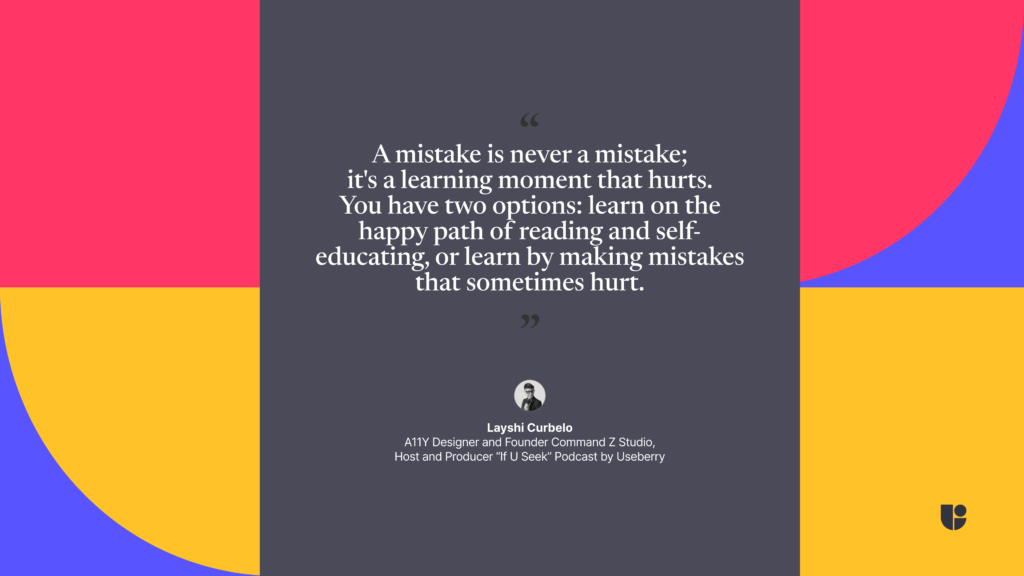
Don’t enter this field just because you want to have cute things in your portfolio. I’ve been in it for almost 10 years now, and I can say my designs are not sexy, and the majority of my amazing colleagues’ work isn’t sexy either. But they create engaging and functional experiences that sometimes, you know what? They are ugly as hell! But again, we are here to solve real and complex problems for humans—not for numbers, not for robots, but for humans.
Establishing UX Research History & Relationship with Useberry
Which Useberry feature is a must for you, and why?
As a designer who advocates for diversity, equity, and inclusion, I cannot pass up the moment to congratulate Useberry for bravely addressing the issue of bias with “Randomization.” I’ve had so many companies asking for tools to help reduce bias or even understand why their results show bias. This has been a game-changer. This feature, in particular, is one of my first steps in showing my students how to do research properly.
What inspired you to host the ‘If You Seek’ podcast?
For me, every podcast is an open door to learning from amazing designers around the world. ‘If U Seek’ podcast has become my new school for gaining deep insights about research. When I heard about this opportunity, it was a chance for me to sharpen my skills in areas that I love and have a lot of interest in. What really inspired me was the fact that I was able to ask the questions that many of us have but don’t necessarily have the person or the moment to ask. I was able to be the voice of many designers who want to hear and learn from this content. Additionally, learning and comparing cultural aspects is invaluable. All my knowledge comes from Las Americas, and having the opportunity to see and ask how things are done in different contexts is a chance to grow.
How do you choose the topics for each podcast episode?
It’s a combination of production goals, audience expectations, and some of the things I want to learn. Over the years, I’ve noticed that some of my ‘weird’ questions are the ones nobody wants to ask but really wants to hear the answers to. It’s also important to understand the industry’s needs. We are in an era where ‘everything is available with a search,’ and being a source of good content is hard. That’s why it’s so important to understand the ‘character’—to really grasp what people want by putting yourself in their shoes. Remember, you are not the user, but you can live through their eyes and feel their pains as an actor does in a play.
Importance of Accessibility and Diversity
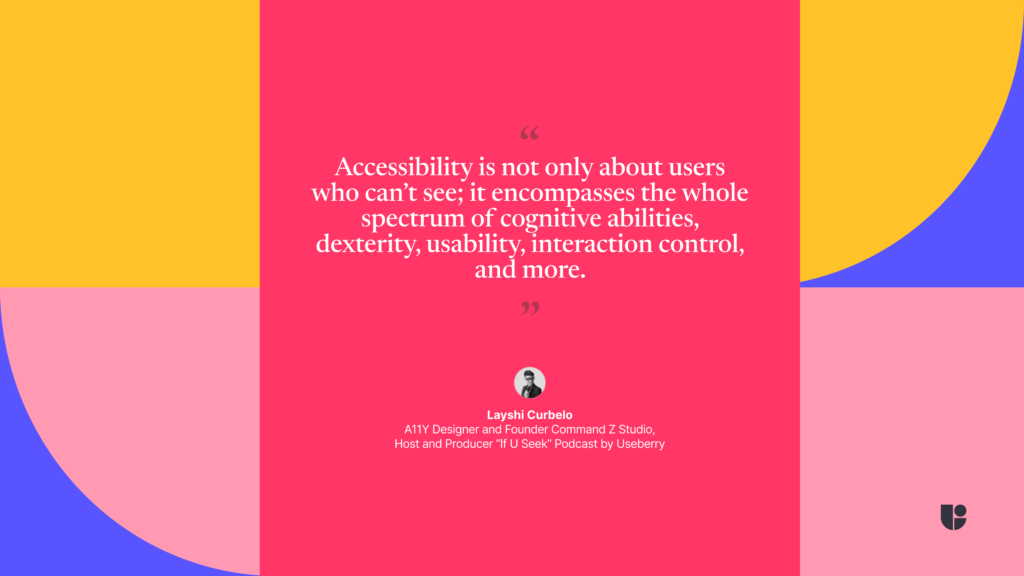
Why is accessibility such a crucial aspect of design, and how do you incorporate it into your projects?
The big problem with accessibility, in my opinion, is that we keep talking about it as something good to do to look good in public relations or to avoid lawsuits, rather than seeing accessibility as a competitive advantage over other companies. It’s an enhancement of your product with the best usability you can have and the best ally for innovation, not to mention, the expansion of a real and tangible market. If you ask me, “I sell accessibility” and I know that sounds horrible but hear me out, we need to start speaking the same language as stakeholders. They want differentiators, strategies, and advantages. Learn to use accessibility well. For me, accessibility is just like any other step in the product cycle. The huge difference is that many companies and designers skip it because they don’t know how to do it.
Can you share a story about how you’ve made a particular design more accessible and what impact it had?
A great example is a project I worked on a couple of years ago that I am really proud of, called ParaVotar.org. This project educates citizens about the voting system in my country, Puerto Rico. Our primary focus was to address the issue of erroneous voting by citizens, commonly referred to as “damaged votes.” Additionally, we aimed to educate and inform citizens about alternative voting methods to enhance their understanding and encourage greater participation in mixed voting alternatives.
My role was to be responsible for the user experience, accessibility, and visual design of the entire platform. Having accessibility in mind from day one allowed us to reach more people really quickly. Within a span of one month, the webpage garnered a total of 29,099 visits, with a noteworthy count of 10,417 unique visitors. On election day, we noticed people across different generations and abilities using their phones to use the platform even doing the line for vote. It was a huge milestone in my career. We had an indirect win in the real problem of the country. The “candidatura” witnessed a 3.77% increase in vote share, accompanied by a significant alteration in the composition of the Senate, involving the addition of five senators from two new political parties and one independent senator. Accessibility is not only about users who can’t see; it encompasses the whole spectrum of cognitive abilities, dexterity, usability, interaction control, and more. It was really a huge project in my career, and I’m blessed to have worked on it.
What steps can designers take to ensure their work is inclusive and accessible to all users?
Again, designers don’t think of accessibility as the last part of the project or as the “good” thing to do. Take it as seriously as any other step in the product life cycle and embed it in your projects. You will truly have an impact on your users.
UX Fun Round
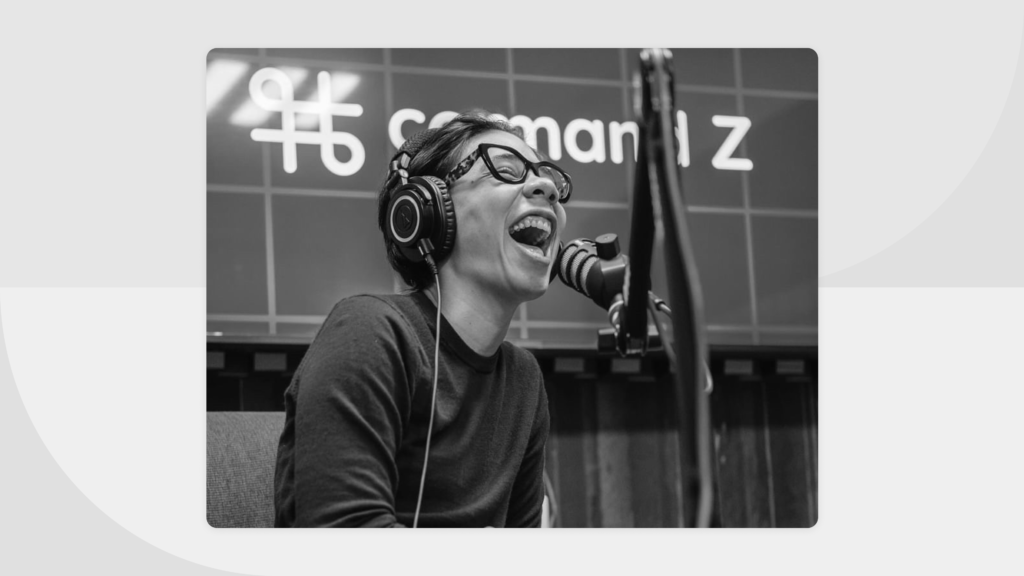
Could you share an unexpected source of inspiration that has impacted your approach to UX?
Let me see… Well, I can definitely say “Reggaeton Music” from my country. Reggaeton music has something really magical for me, and it’s the feeling of being “invincible.” All the rappers talk about how good they are and how they are the leaders. It makes me laugh, but I also notice that these are my street affirmations, lol. So every time I have a huge problem to solve, I start with Bad Bunny or Wisin y Yandel to put my head in the game.
Given no constraints, what would be your dream UX project to work on and why?
Ufff, that is an amazing question to close. Well, I am a super simple minimalist person, but I am a foodie, and I would love to work on a project where I can help with the digital and physical user experience of a restaurant. I was in Germany when I discovered “Le Petit Chef Restaurant.” OMG, I really want to create something like that or work for them!!!
Conclusion
Layshi’s journey shows how important it is to follow what you’re good at and passionate about. By focusing on solving real problems creatively and communicating effectively, she has not only grown in her career but has also made a significant impact in UX design. Her quote, “Design is about solving problems for humans, not just creating pretty things” reminds us to prioritize empathy, creativity, and inclusivity in our own journeys toward making a positive difference.
Want more insights from top UX designers?
Listen to the ‘If U Seek’ podcast now!



